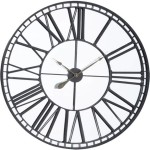How to Mirror iPhone to Macbook Without Wi-Fi
Mirroring an iPhone screen to a Macbook can be highly beneficial for presentations, demonstrations, or simply enjoying media on a larger display. While Wi-Fi is a common method for screen mirroring, there are situations where it might be unavailable or unreliable. This article outlines several methods to mirror an iPhone to a Macbook without relying on a Wi-Fi connection.
1. Using a USB Cable and QuickTime Player
This is perhaps the most straightforward and reliable method. It leverages the direct connection provided by a USB cable, ensuring a stable and lag-free mirroring experience.
First, connect the iPhone to the Macbook using a Lightning to USB cable. Ensure the cable is Apple-certified for optimal compatibility and performance. Upon connection, the iPhone might prompt for trust authorization. Select "Trust" on the iPhone to proceed.
Next, open QuickTime Player on the Macbook. QuickTime Player is a pre-installed application on macOS. Locate it in the Applications folder or through Spotlight search.
With QuickTime Player open, navigate to File in the menu bar and select "New Movie Recording". This will activate the camera input selection.
A small dropdown menu will appear next to the record button in the QuickTime Player window. Click this dropdown and select the connected iPhone as the camera and microphone input. The iPhone's screen will then be mirrored on the Macbook display.
This method provides a high-quality mirroring experience with minimal latency, making it ideal for activities demanding real-time responsiveness.
2. Utilizing Peer-to-Peer AirPlay with Bluetooth
While AirPlay is commonly associated with Wi-Fi, it can also function through a peer-to-peer connection using Bluetooth, albeit with some limitations. This method is suitable for mirroring basic content when Wi-Fi isn't available.
Ensure both Bluetooth and AirPlay are enabled on both the iPhone and the Macbook. On the Macbook, AirPlay can be accessed through the Control Center or System Preferences depending on the macOS version.
On the iPhone, open the Control Center. The method for accessing Control Center varies slightly depending on the iPhone model; swipe down from the top right corner on iPhones with Face ID, or swipe up from the bottom of the screen on iPhones with a Home button.
Locate and tap the "Screen Mirroring" button within the Control Center. The Macbook should appear in the list of available devices if Bluetooth is enabled and the devices are within range.
Select the Macbook from the list. The iPhone's display will then be mirrored to the Macbook screen. Keep in mind that performance might be limited compared to Wi-Fi based AirPlay due to the lower bandwidth of Bluetooth. This method is best suited for displaying static content or less demanding applications.
3. Employing a Wired Connection with Third-Party Software
Several third-party applications offer screen mirroring functionality via USB. These applications can provide added features and potentially improved performance compared to the standard QuickTime Player method. Research and select a reputable and compatible application from a trusted source.
After installing the chosen application on the Macbook, connect the iPhone using a Lightning to USB cable. The application should automatically detect the connected iPhone.
Follow the application’s specific instructions to initiate screen mirroring. These instructions will generally involve selecting the iPhone as the source device within the application's interface.
Third-party applications often provide additional features such as recording the mirrored screen, adjusting the mirroring resolution, or adding overlays. Explore the application's settings to fully utilize its capabilities.
Choosing a wired connection offers a stable and reliable mirroring experience. Be sure to research the chosen third-party application thoroughly to ensure compatibility and security.
These methods provide alternatives to Wi-Fi for mirroring an iPhone to a Macbook, offering flexibility and practicality in various situations. The chosen method will depend on the specific requirements of the task, considering factors such as latency, performance, and available resources.

How To Mirror Iphone Mac Without Wi Fi

How To Mirror Iphone Mac Wirelessly Full Guide

How To Mirror Iphone Mac Without Wi Fi

4 Ways How To Mirror Iphone Mac Without Wifi Airdroid

How To Mirror Iphone Mac Without Wi Fi

How To Mirror Iphone Mac Wirelessly Full Guide

How To Mirror Iphone Mac Without Wi Fi

How To Mirror Iphone Mac Without Wi Fi

Best Ways To Mirror Iphone Pc Via Usb Without Wifi

How To Mirror Iphone Display Macbook Ios 12 Macos Mojave








